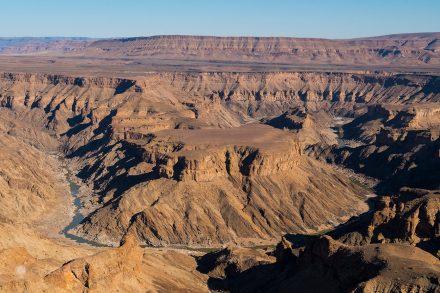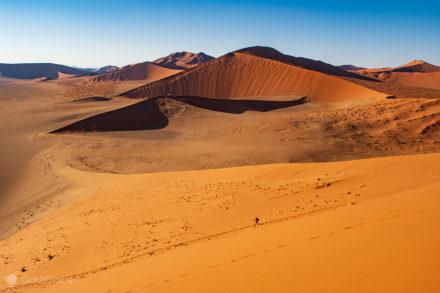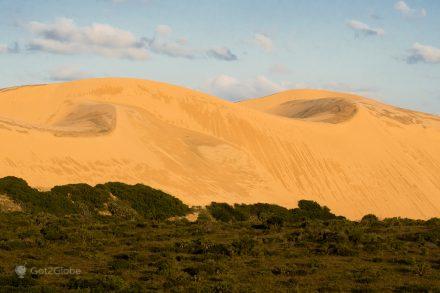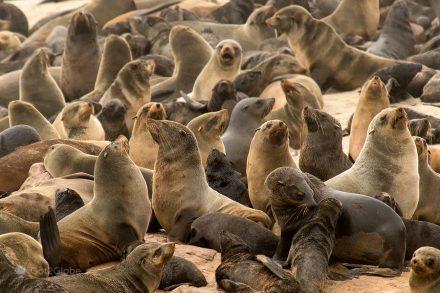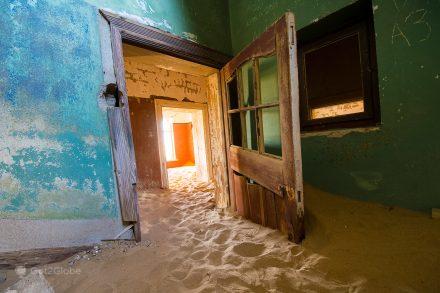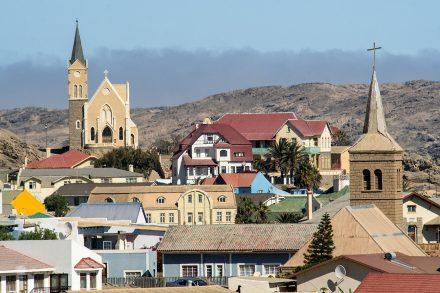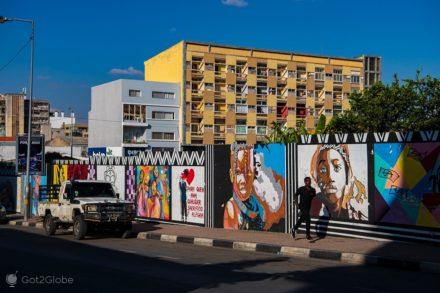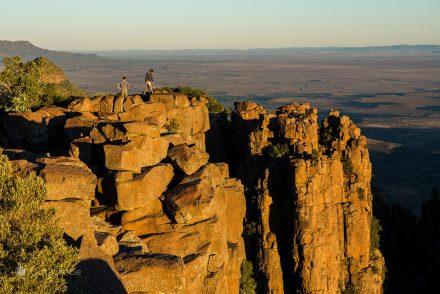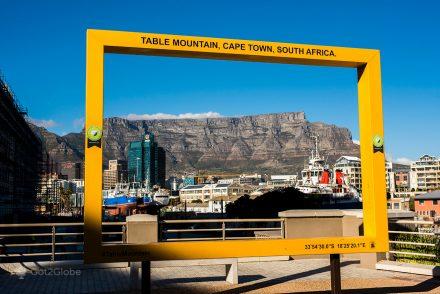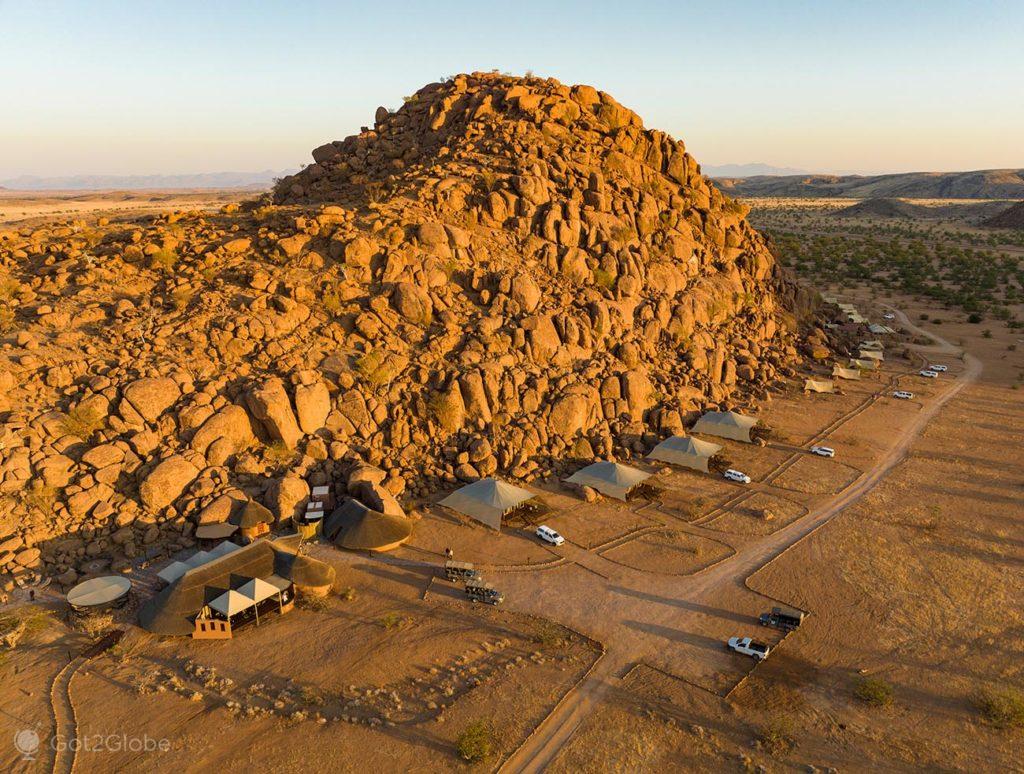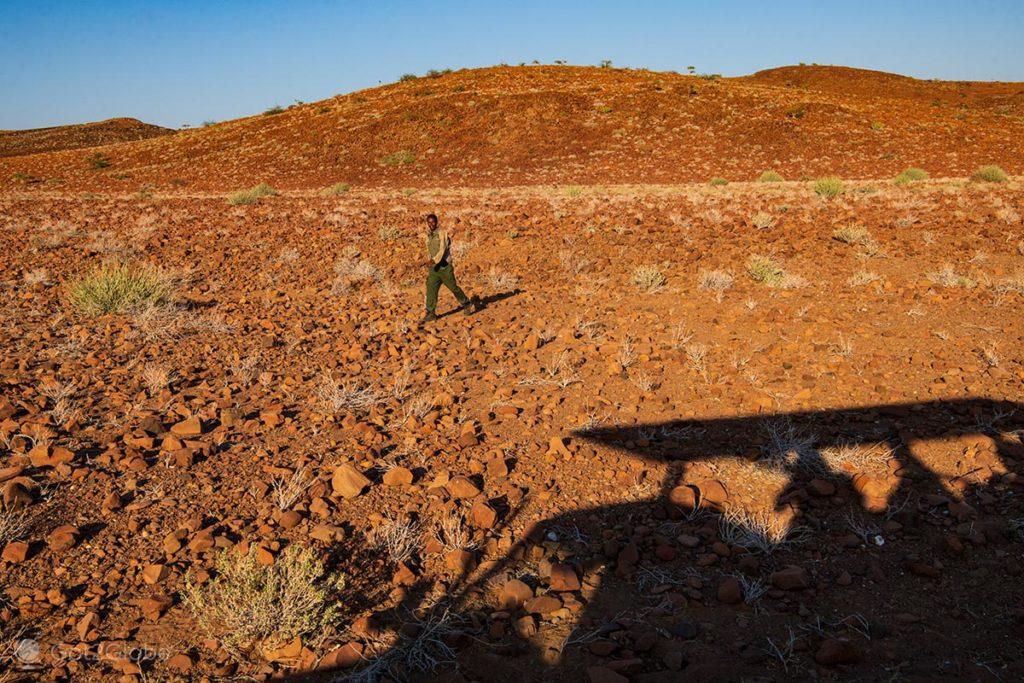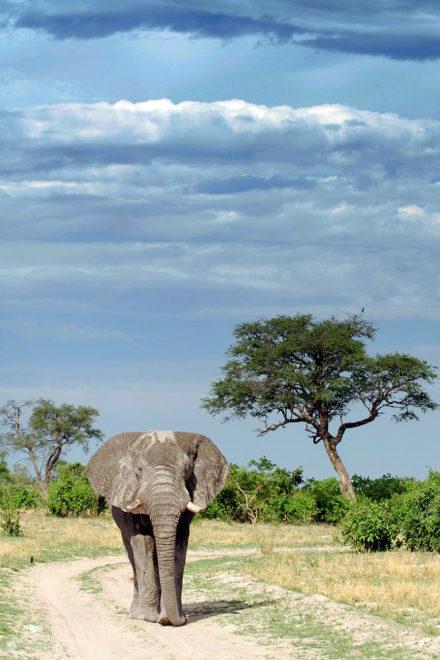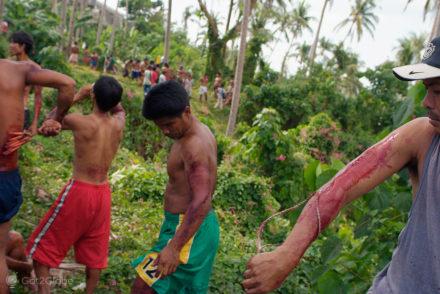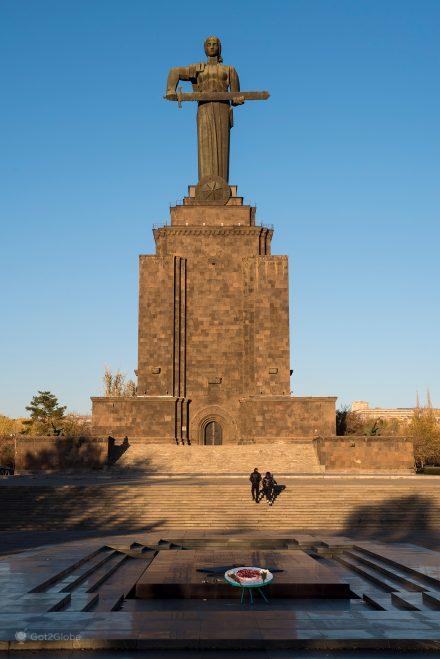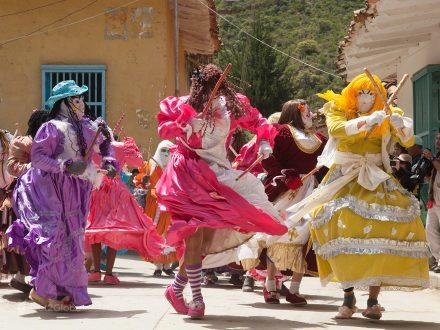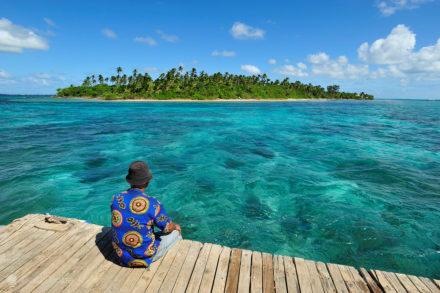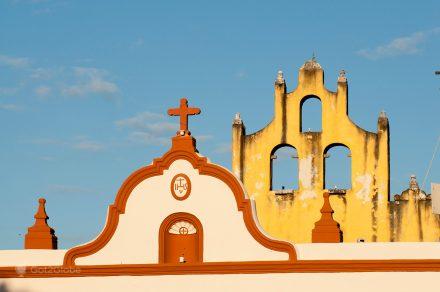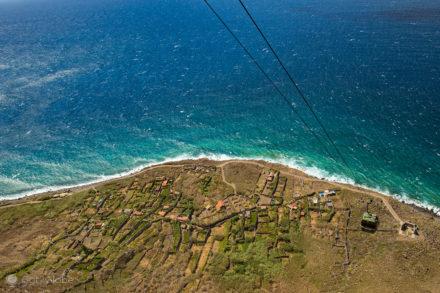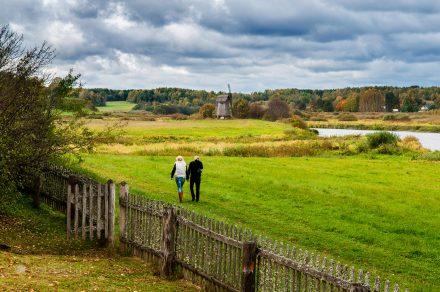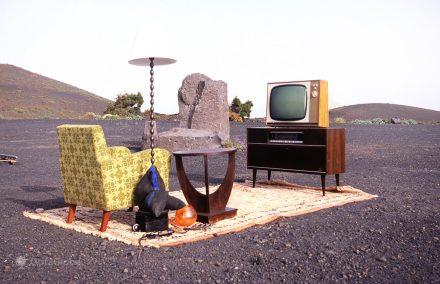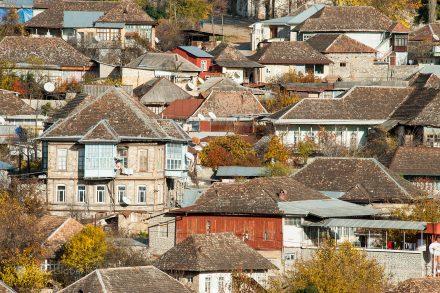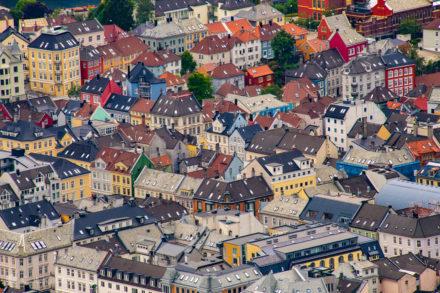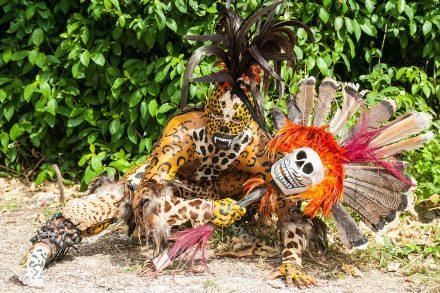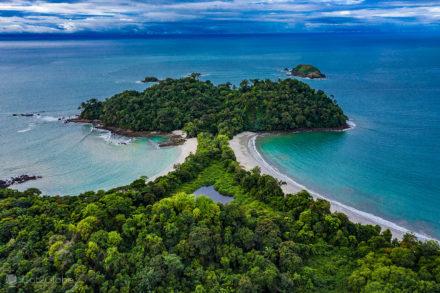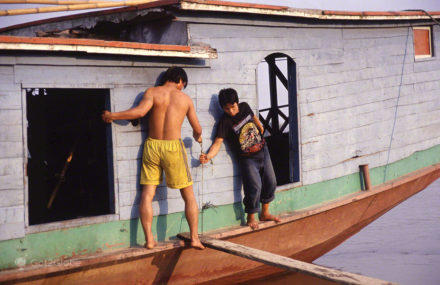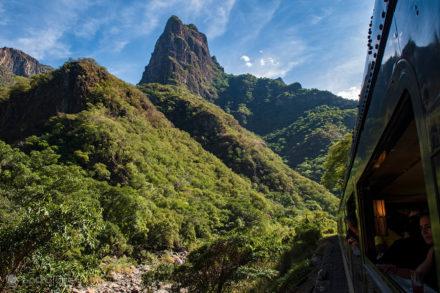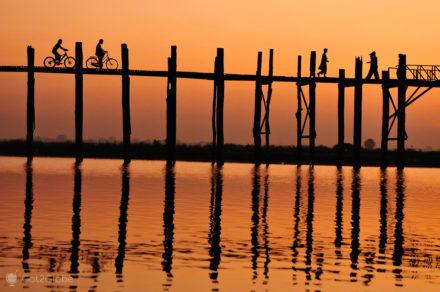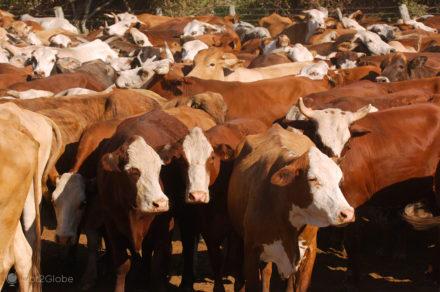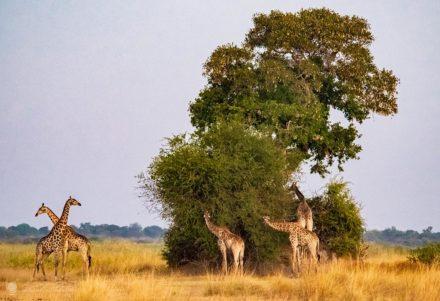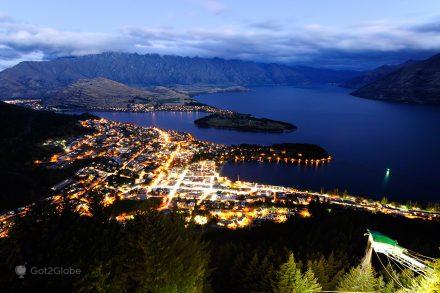We started by confessing that we hadn't done our homework for Namibia.
We rented a car that was too cheap and inadequate. We were unprepared for the dramatic transition that was to follow.
A few days before, we completed the journey from the capital Windhoek to PN Etosha, comfortable and flying low.
The same happened on the initial stretch between Etosha and Damaraland Camp where we were supposed to check in before dark.
We hit Otavi in a flash. In Otavi, we are forced to leave Namibia's road backbone and head west.
We opened on the country's C roads, made of gravel, instead of the well-paved B roads.
From Otavi to Outjo we proceeded without complaint, but from Outjo onwards we soon found ourselves in motorized hell.
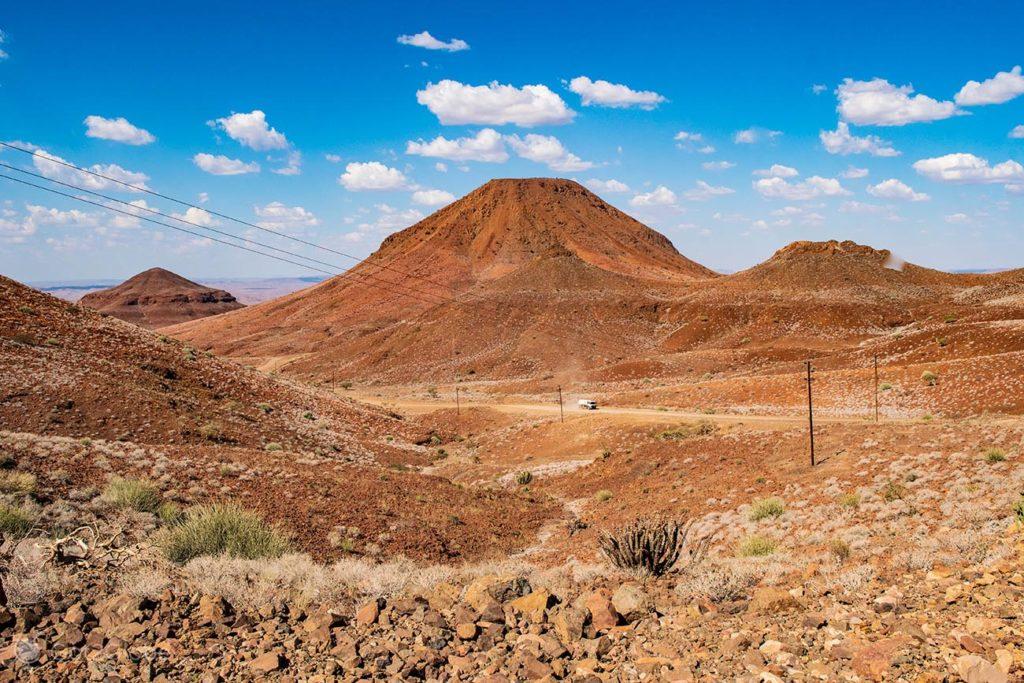
Vehicle climbs an abrasive road in the Khorixas region.
Damaraland Above: An Abrasive Journey
Our car and the others raise a dry dust that infiltrates the passenger compartment and irritates us, as much as it irritates the respiratory tract and the eyes.
The sun and the temperature soared and the air conditioning succumbed to the invasion of dust.
For the next few hours, we felt like we were in a dirty sauna.
As if that weren't enough, the roller coaster profile of the itinerary – which passed over rivers and streams that are exclusive to the rainy season – required us to pay extra attention.
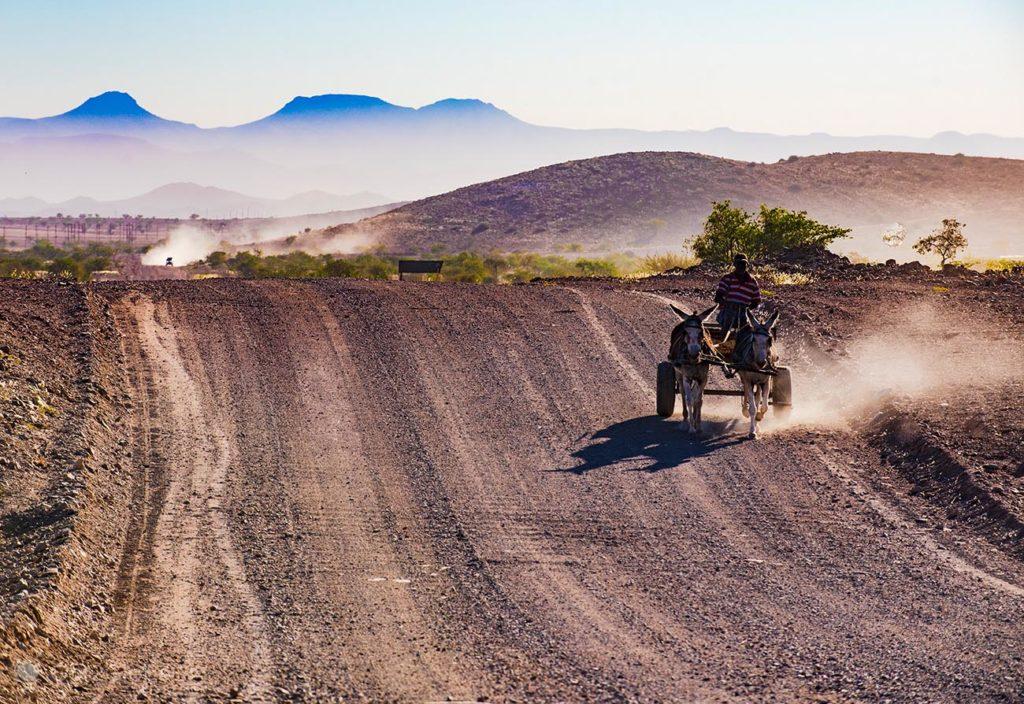
Wagon moves along one of the stony and dusty roads around Khorixas.
Sudden ramps and detours forced us to brake and “landing” that either stuck us to the seats or shook us.
“Is it always going to be like this?” he complains to Sara, sweaty, slumped, with a dying look, from the place of the dead man.
Even if he knew them the same or worse, he would always answer in the same way: “it's just a little bit more like that.
One more hour we are there. Tomorrow we won’t even remember about it.”
Panoramas and the Outlawed Inhabitants of Damaraland
Well over an hour went by without a shadow of a place to stop, drink something and refresh ourselves.
We only interrupted that African rally to photograph the first surreal scenes of Damaraland.
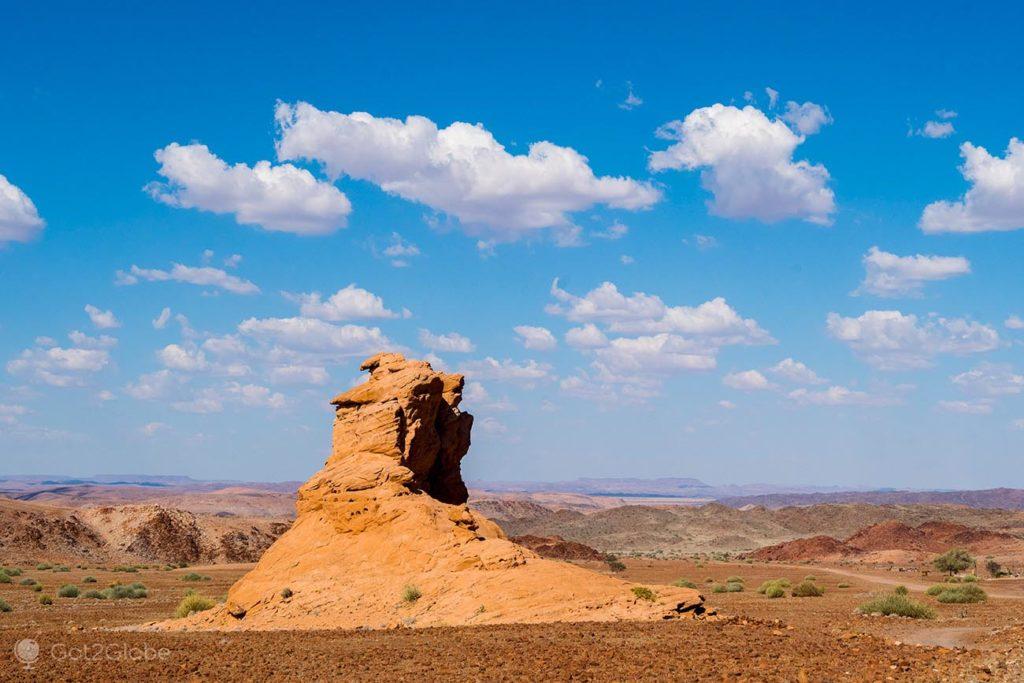
Rock formation bequeathed by erosion in Damaraland.
At half past five in the afternoon, between rocky and stray hills, we found the Damaraland Camp car park.
Only the most robust jeeps could complete the route to the lodge.
We immobilize the car. We await the transfer chatting with Neil Adams, neighbor of Sabina Waterboer, the usual guardian of the vehicles.
Both Neil and Sabina belonged to the Riemvasmaak tribe and the Damaraland ethnic group.
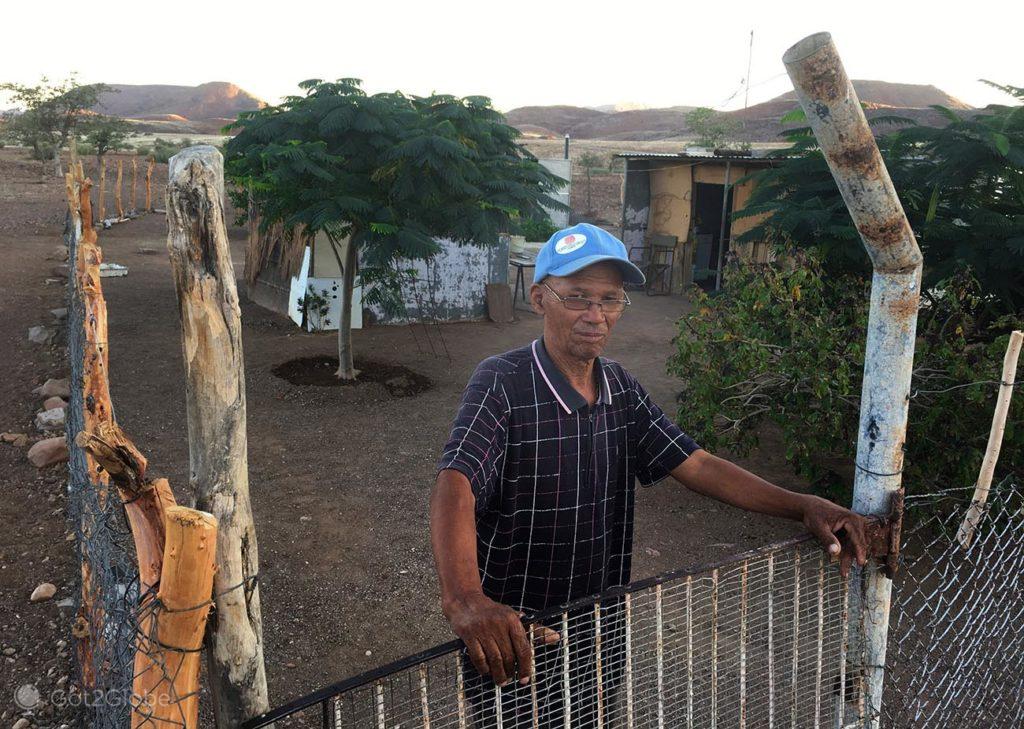
Resident in charge of the parking lot at Damaraland Wilderness Camp, once exiled from North South Africa.
Dona Sabina had gone to a funeral. We never got to meet her.
In any case, we quickly realized that, more than a parking lot, what was there were lives. Lives of exile in a no man's land.
Two humble houses had been built on sandpaper soil. Wire fences protected the homes, a few low trees, and a few domestic animals inside.
The longer the jeep took, the more it intrigued us why someone would settle in those arid nowheres.
We knew we were in an area crossed by wild animals. We started the conversation there. "These goats must attract a little bit of everything here, no?" “Attract each other”… Sabina's neighbor answers us.
From time to time, the lions smell them and we find them around here. Other times, it’s brown hyenas.”
We let the verbiage flow until we felt comfortable.
At a certain point, we couldn't resist: “Don't get us wrong, but… how did you end up in a place like this”
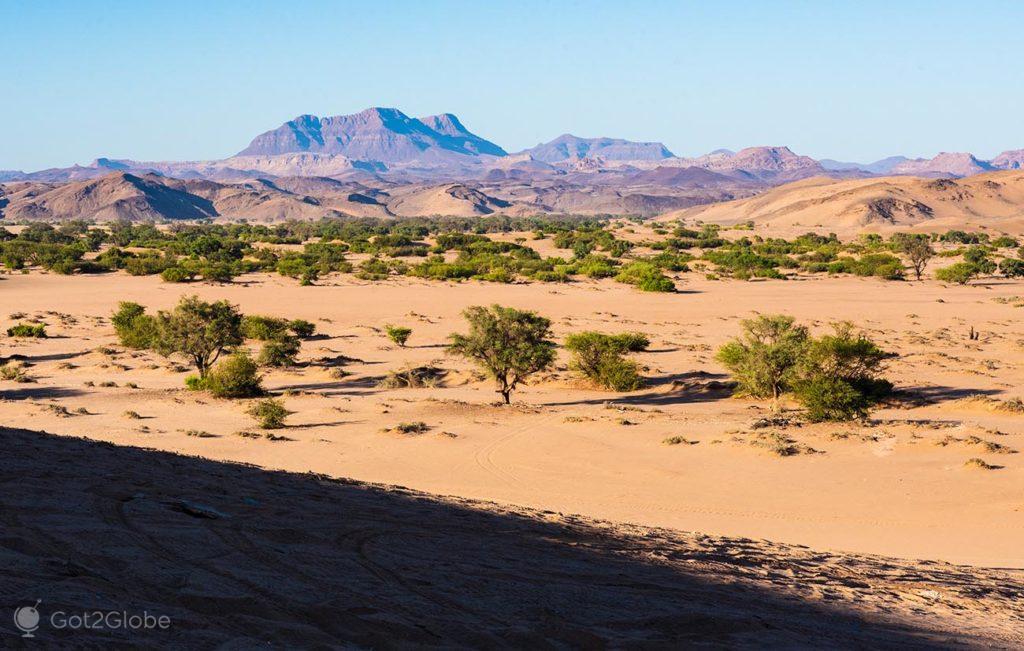
Semi-verdant scenery of the vastness of Damaraland, in the immediate vicinity of Twyfelfountein.
“We didn't have much of a choice”, explains the calm interlocutor, who takes the opportunity to enlighten us about the misfortune that devastated the small community.
An Inhuman Legacy of Apartheid
In the 60s, under the auspices of the League of Nations, the Apartheid da South Africa still ruled South West Africa, confiscated from Germany during the 1st World War.
Following the example of the atrocious years of Germanic occupation and the historic preamble opened by boer pioneers, endeavored to implement a Homelands policy there, colloquially known as the Odendaal Plan.
According to the recommendation of such a Commission of Inquiry on the Affairs of South West Africa, “the good use of the resources available to both whites and natives recommended the creation of lands that would accommodate the different ethnic groups of the vast territory”.
Through this Machiavellian plan, in practice, the authorities proposed to exile entire communities from the places where they lived, manipulating their dignity as if they were a game.
It is clear that, in the midst of this alleged ideology, numerous commercial interests spoke louder. “We had a perfect life back in Mgcawu, near the Orange River” Neil tells us.
“But, they wanted that whole area for diamond mining and others. They sent us here.”
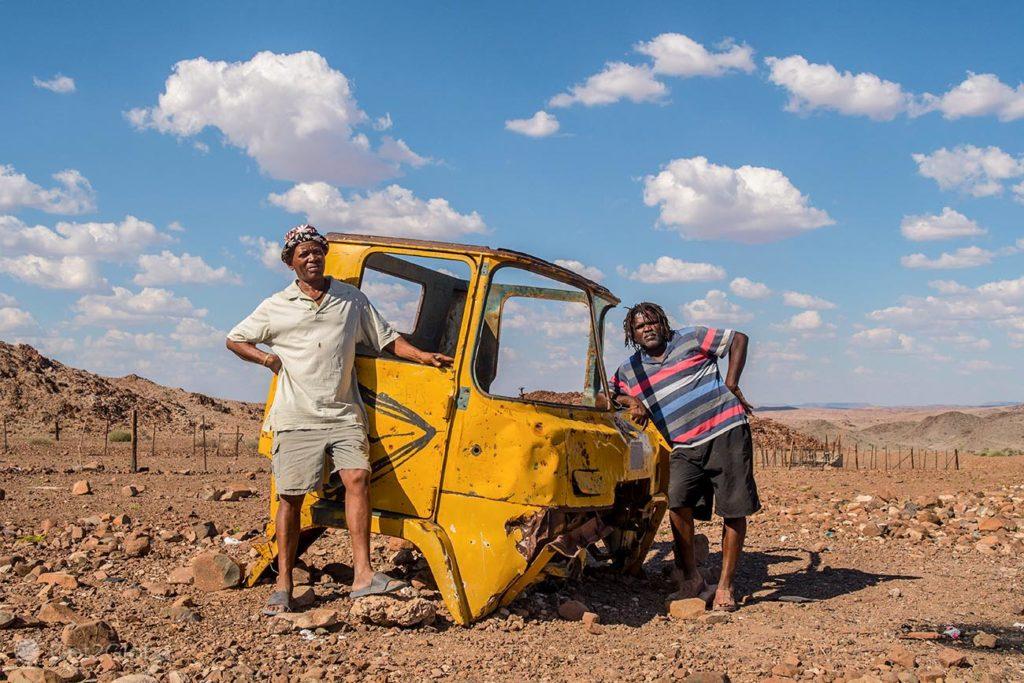
Two inhabitants descended from those displaced by the South African plan of Odendaal.
According to the plan, the new Bantustan of Damaraland was supposed to host only the Damara people, considered one of the oldest in the Namibian region, after the San and the Nama.
The Odendaal Plan continued to move the natives at the whim of the rulers.
Neil and many of the neighbors were forced to rise from scratch in those inhospitable areas.
Mrs. Waterboer's arrangement with Damaraland Camp to look after the cars supplemented her particular existential vacuum like a blessing.
From Damaraland Camp to Desert Elephant Demand
The jeep appears. Interrupts the conversation.
He takes us to the lodge where we settle in three times.
Sunset toasts the surrounding hills and valleys even more.
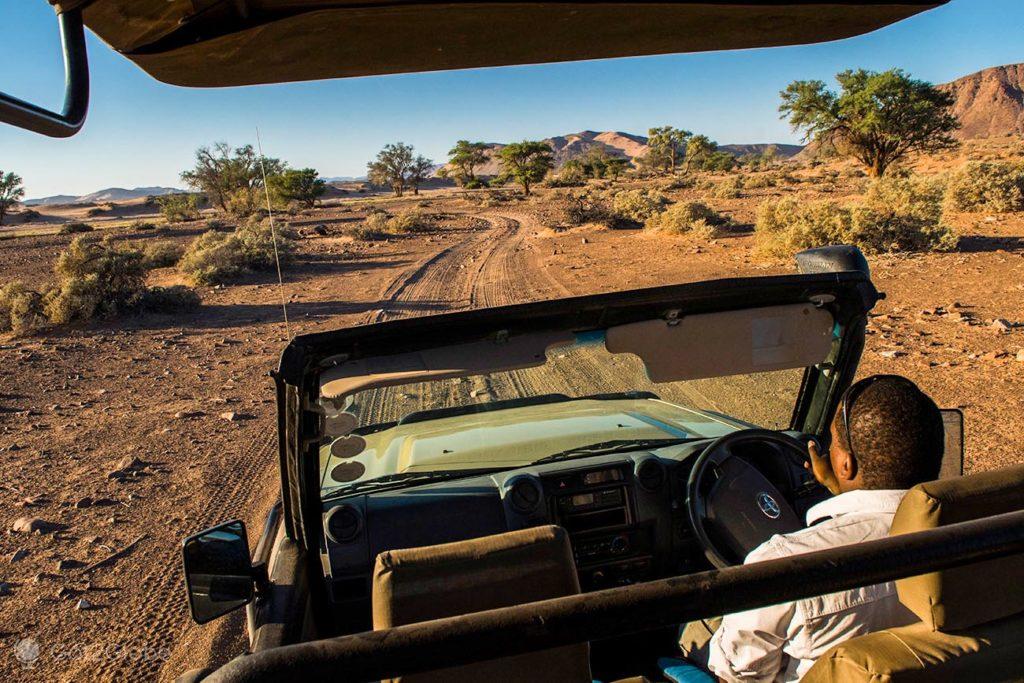
Damaraland Camp guide drives a jeep along a narrow trail in the region.
It makes them so scarlet that we wonder if we've made it to Mars.
Only dinner at the table with the other guests and the associated earthly pleasures dispels that doubt.
We woke up at 5:30 am.
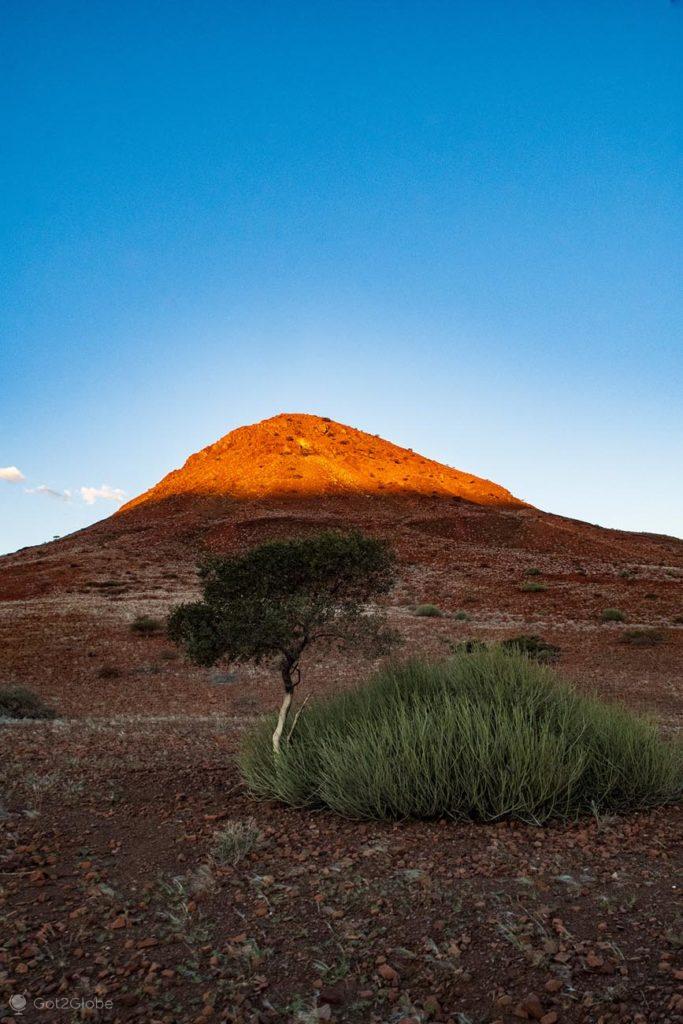
Rising sun falls on the top of a hill near the Damaraland Wilderness Camp.
A jeep from Damaraland Camp takes us to a central high rise.
It is there that we have breakfast with the full moon resisting the re-emerging sun.
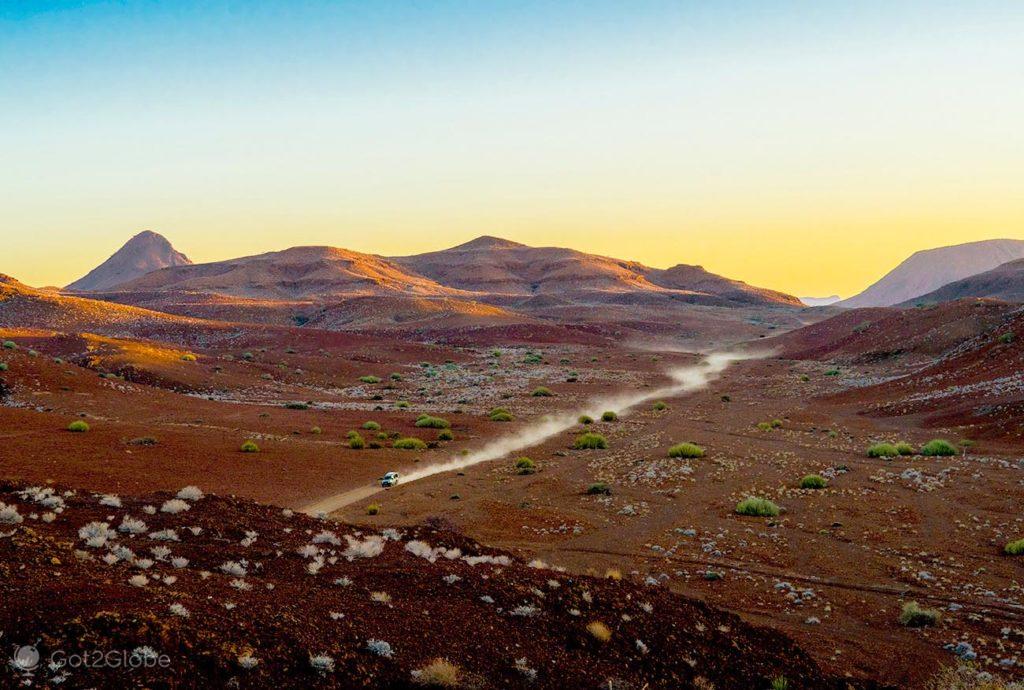
Jeep crosses the reddish expanse around the Damaraland Wilderness Camp at dawn.
Made of mountains and valleys dotted with small trees, with robust and thorny green bushes.
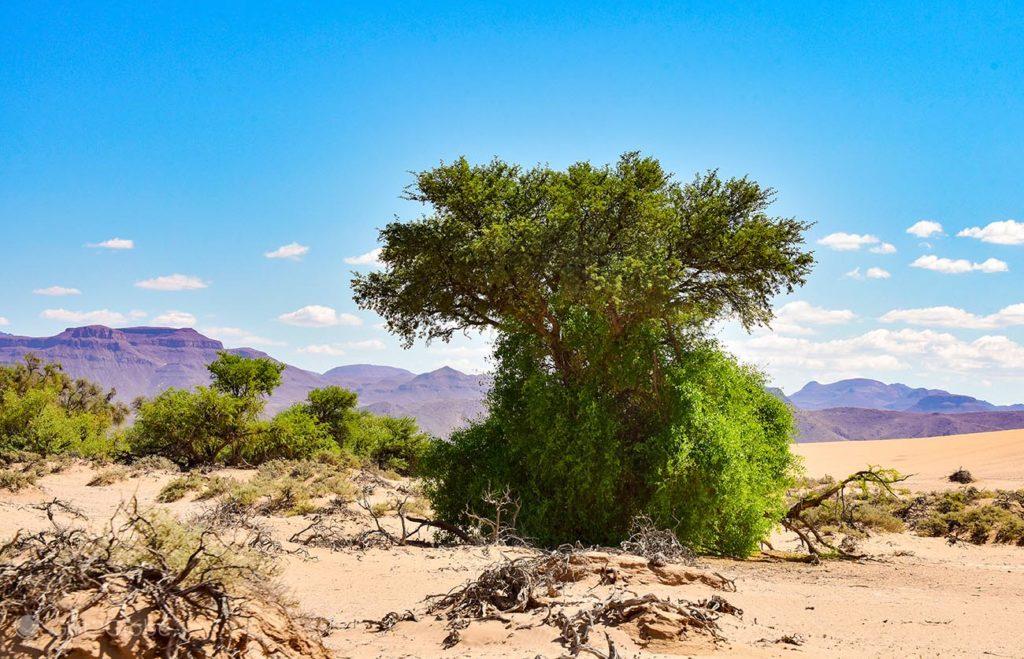
A verdant tree stands out from a sandy bed in Damaraland.
Three jeeps drive down the hill into the valley.
They start by traveling in a caravan but soon disperse in order to optimize the search for pachyderms.
We cross desolate valleys surrounded by ancient mountains and volcanoes.
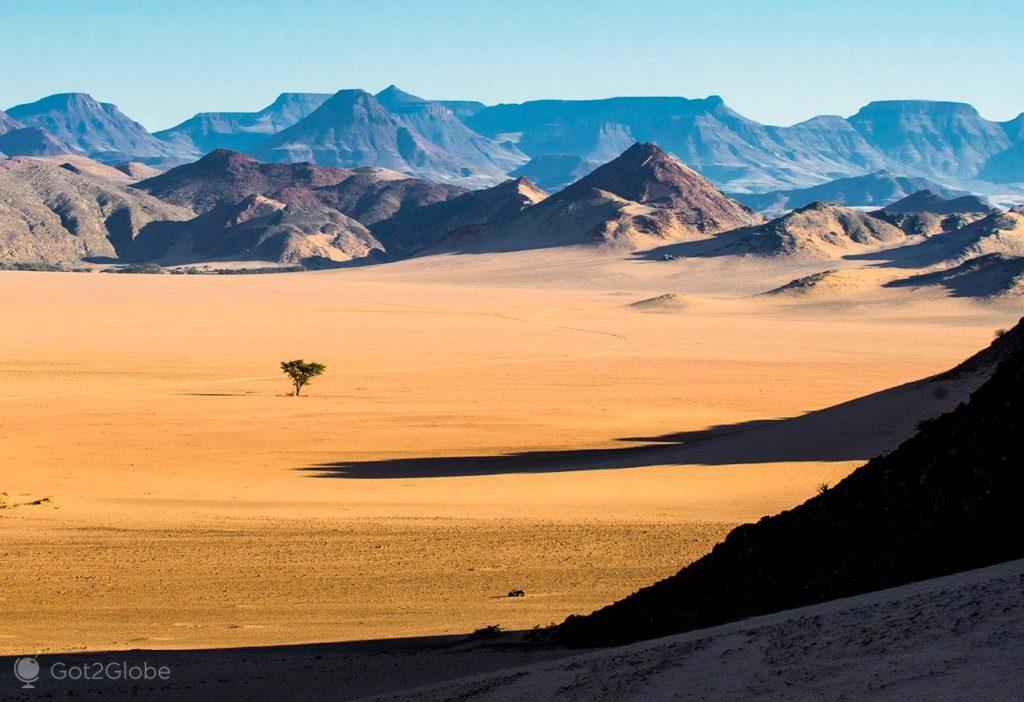
A small acacia tree defies the barrenness of the mountainous desert of Damaraland.
In the vastness, a solitary acacia tree confirmed the biological resilience of those confines.
The jeeps keep in touch via radio.
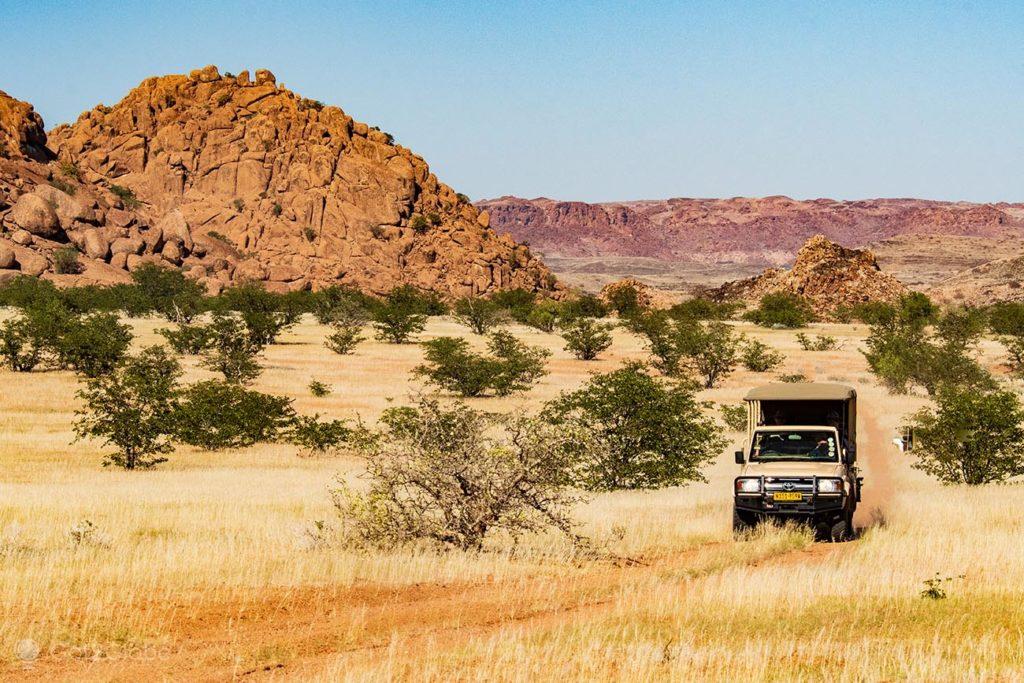
Damaraland Wilderness Camp jeep searches for animals in the Damaraland landscape.
They exchange information about footprints and other clues.
Before long, we crossed the road on which we had arrived at Damaraland Camp the previous afternoon.
“These desert elephants here are special, you know?
They are much lighter and more agile.” explain the guide to us. “They got used to going up and down the hills. So, sometimes, it costs us to find them.”
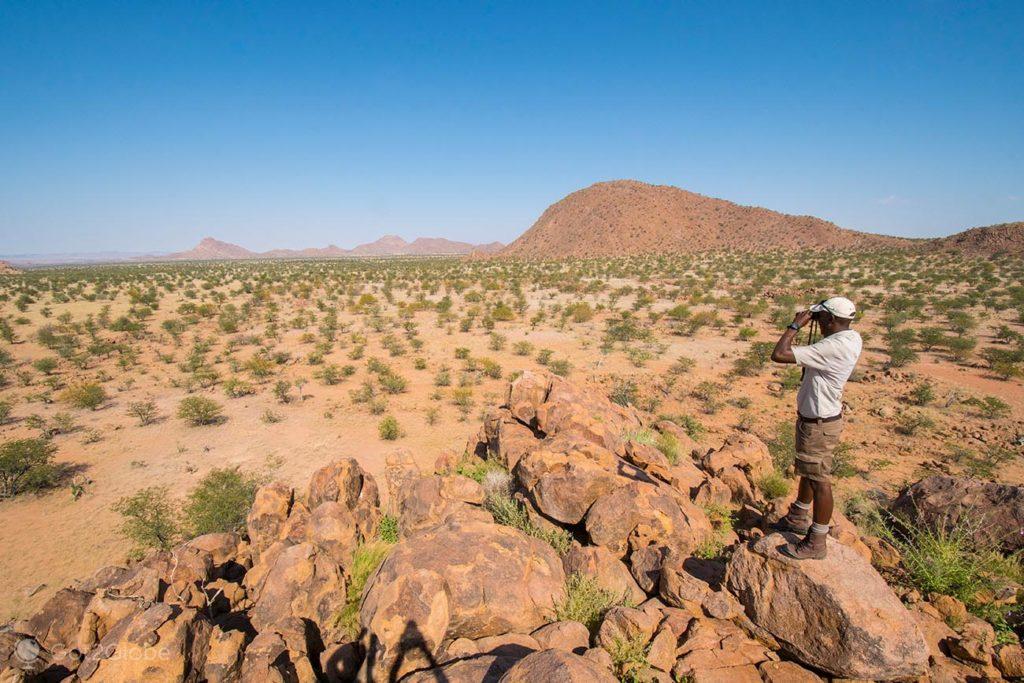
Guide John scans the inhospitable horizon in search of elephants
Anyway, the Elusive Pachyderms
We searched the other side until exhaustion.
Meanwhile, stuck in tighter valleys, we intersected the paths followed by the other jeeps.
We stop to exchange new evidence.
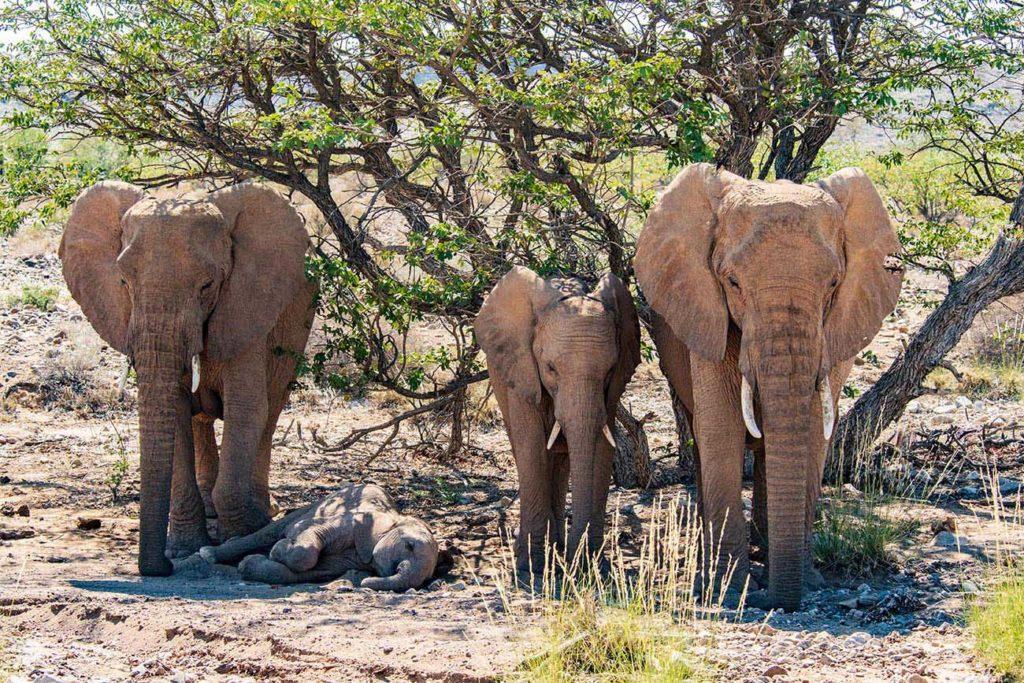
Elephants protect themselves from the increasingly intense heat in the shade of the region's thorny vegetation.
Finally, well past eleven in the morning, we found the herd.
We admire them for some time. The animals admire us.
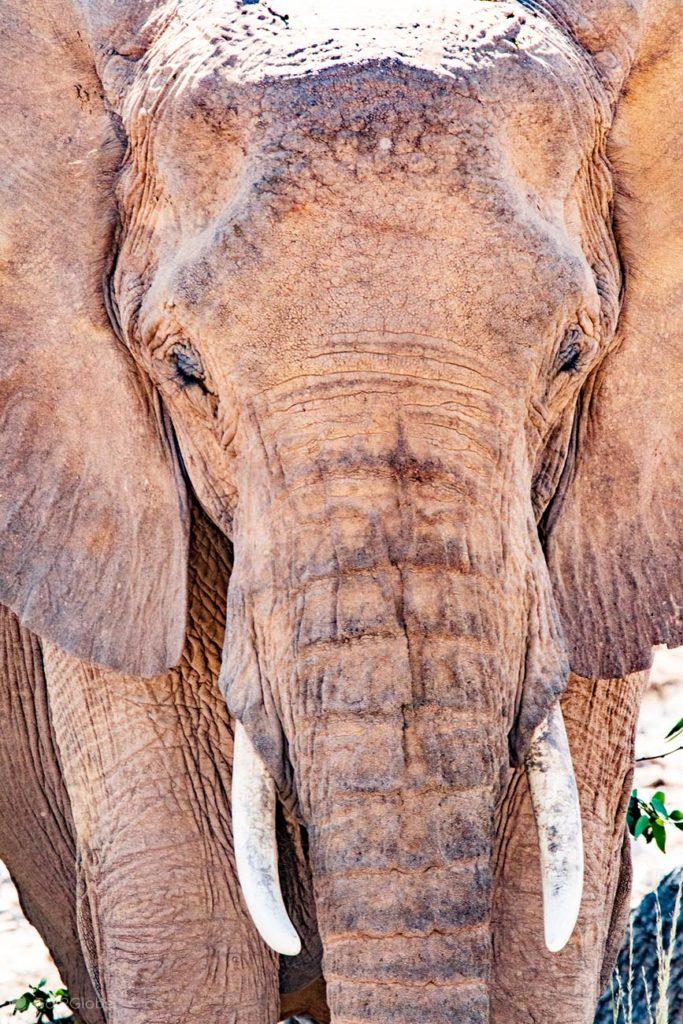
Head and trunk of one of the elephants that roam the region around the bed of the Huab river.
Then we head back to the lodge. We repack.
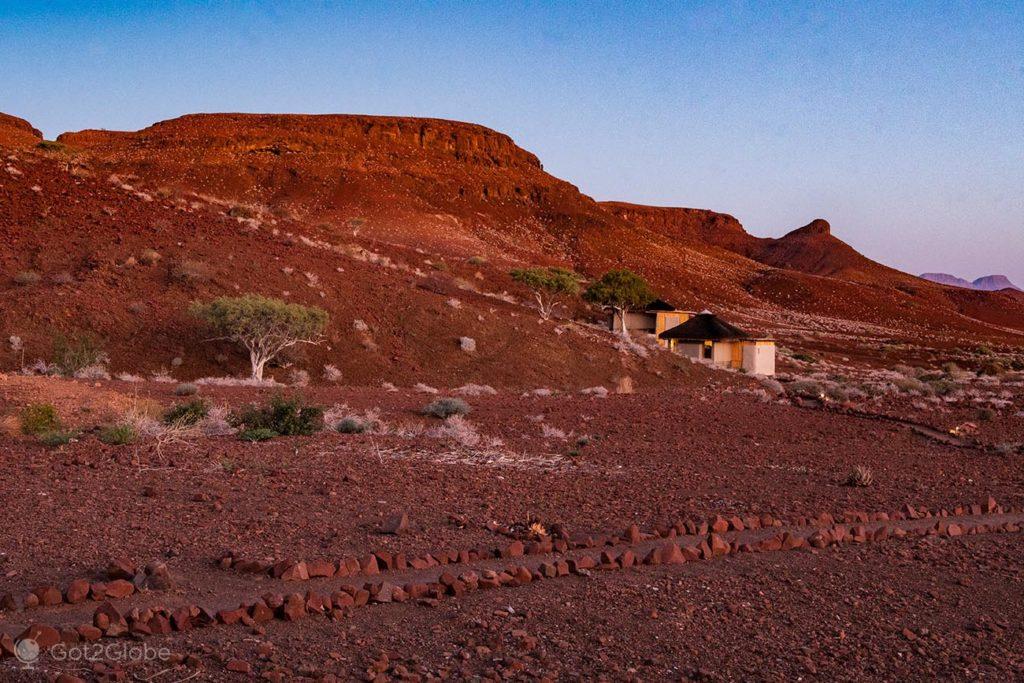
One of several huts at Damaraland Camp
We say goodbye. We head south.
The further south we got, the more fascinating piles of ocher rocks, identical to those that surrounded us while we were looking for elephants, abounded.
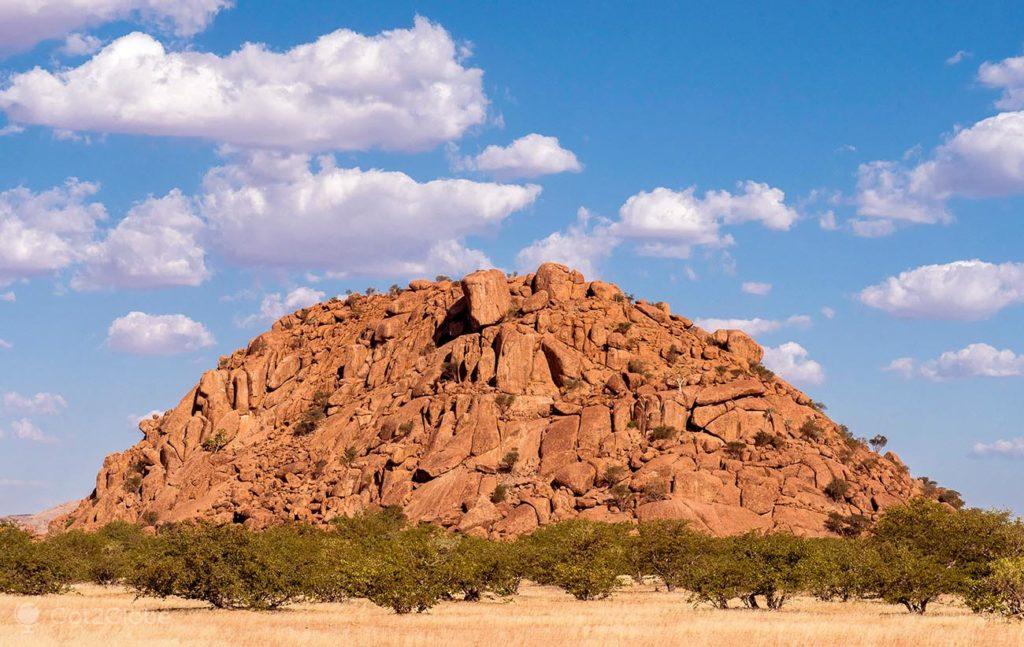
One of the piles of large pink granite boulders that dot the vastness of Damaraland.
As usual in Namibia, the next lodge was far away and the itinerary had category C, D and worse roads.
We get on the way as soon as possible.
Even so, we arrived at Sorris Sorris Lodge it was already dark.
Andrew the manager installs us. He treats us to a divine dinner.
Sorris Sorris Lodge and the Supreme Mountain of Namibia
As happened at Damaraland Camp and is typical of the region, dawn reveals a new, unlikely place.
The warm morning light falls on the terrace of the lodge on one side and on other outbuildings, arranged on the slope of yet another large hillock of pink granite pebbles.
The sun does not take long to pass behind the lodge.
Finally, it highlights the scenery ahead of that privileged amphitheater, handpicked by Victor Azevedo, a businessman who has breathed Africa for a long time – he lived in Angola, South Africa, then Namibia – and which, after triumphing in restoration, bet on a network of lodges that would reveal selected Namibian spaces.
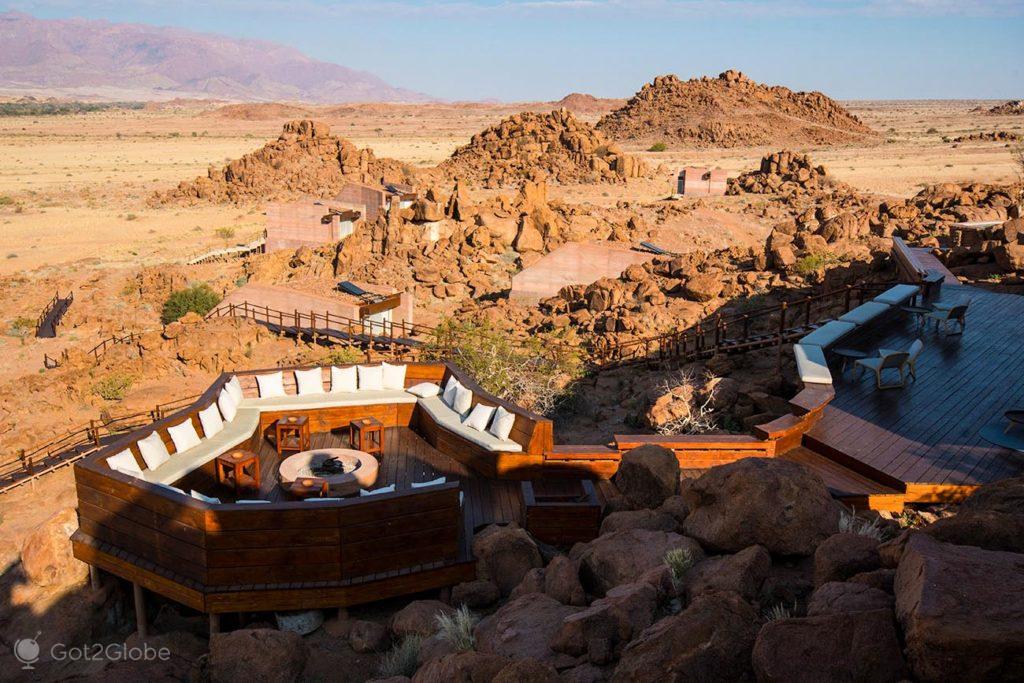
Structure of Sorris Sorris Lodge, installed on the slope of one of the many pink cliffs at the foot of the highest Namibian elevation, the Brandenberg Mountain
Ahead, at a good distance, we had the sandy bed of the Ugab River. And the alluvial plain spread by the fulminating floods of the rainy season.
Above, stood Brandberg, an impressive rock mass with 2573 meters, the queen mountain of Namibia. For 72 hours, the eccentric geology of Damaraland has dazzled us.
We decided to extend our stay at Sorris Sorris with a very clear objective: to be able to continue to admire it.














